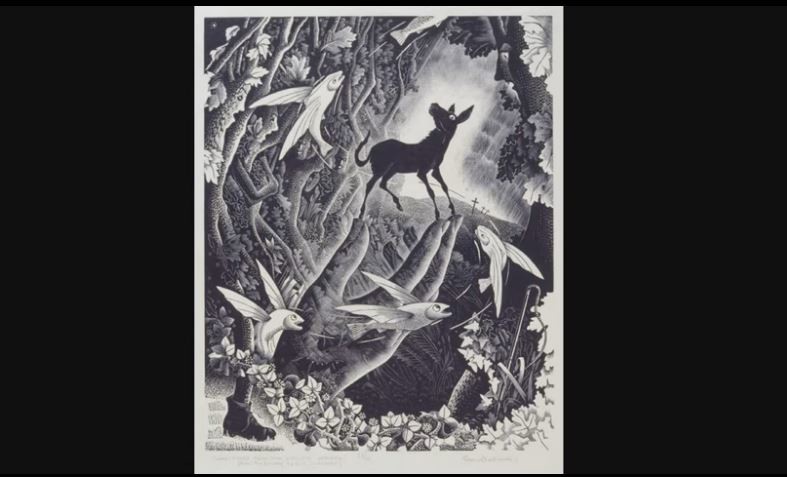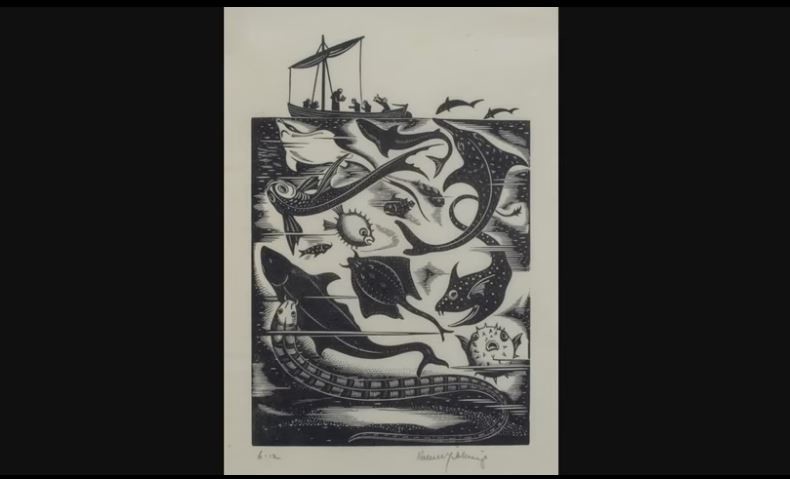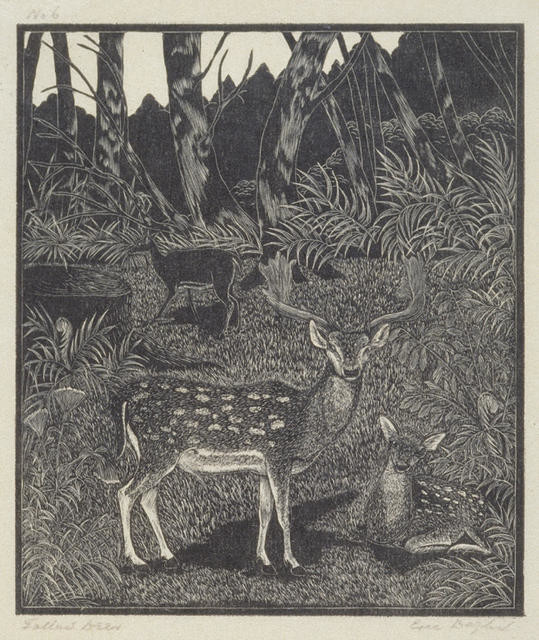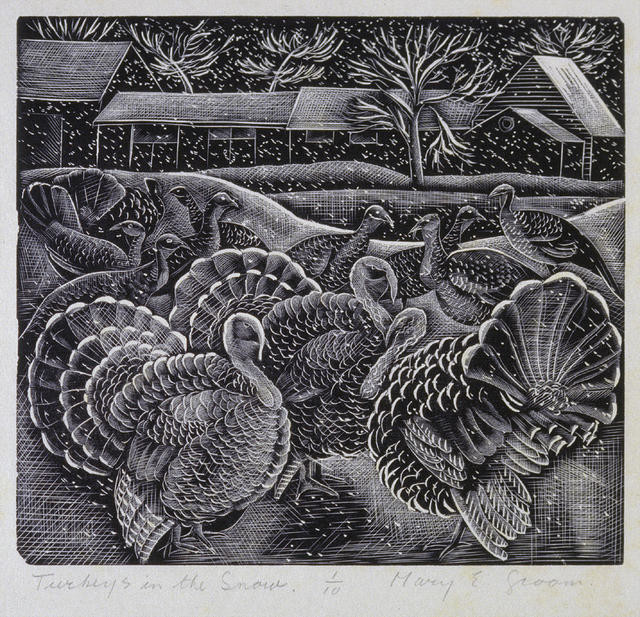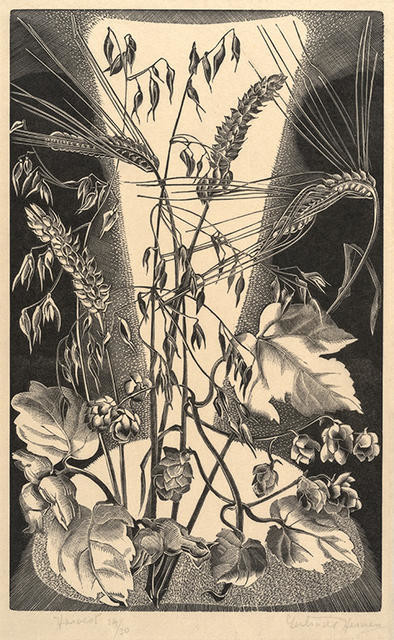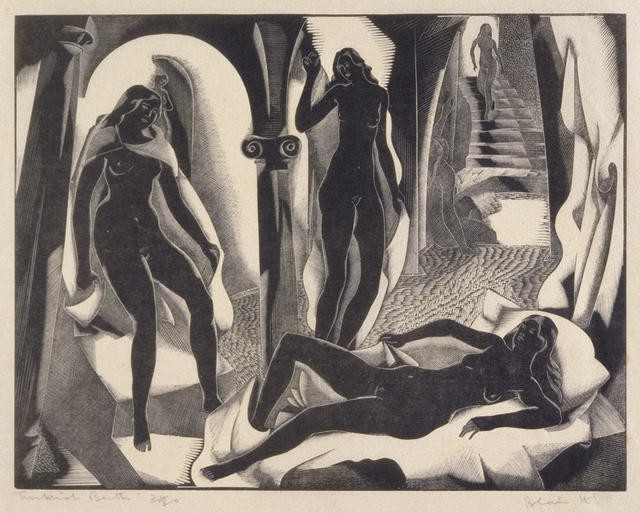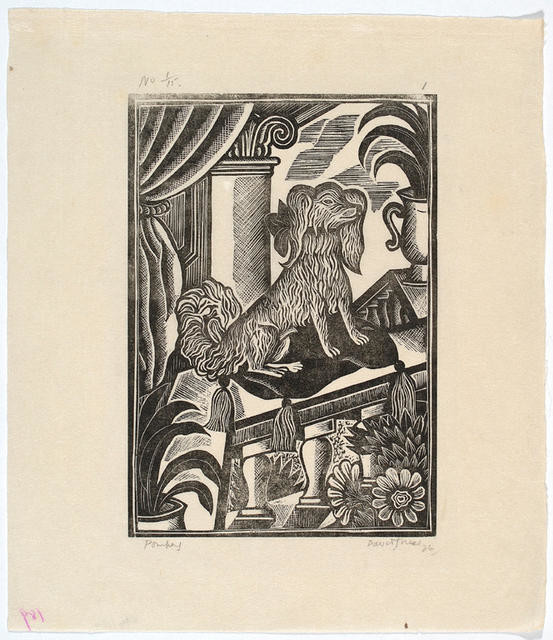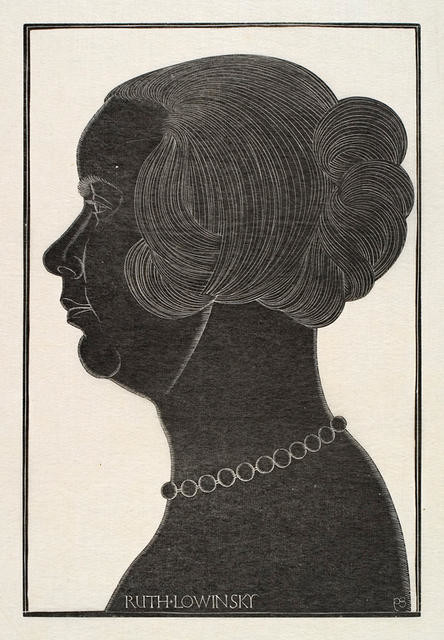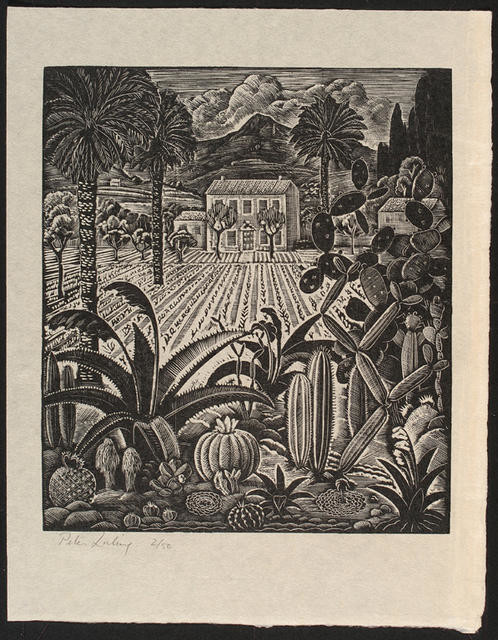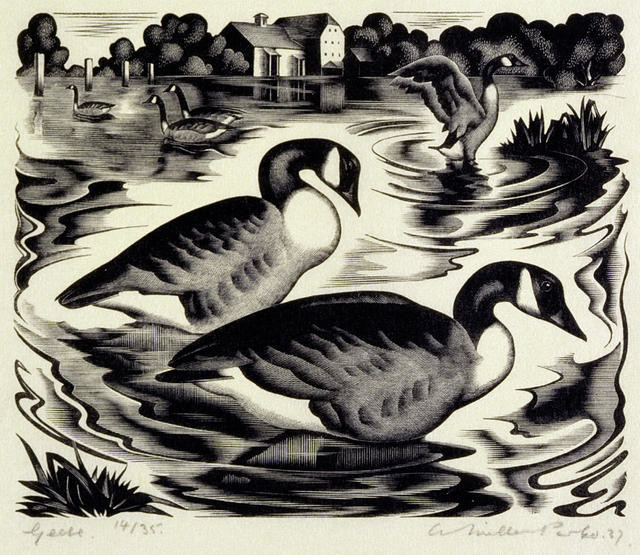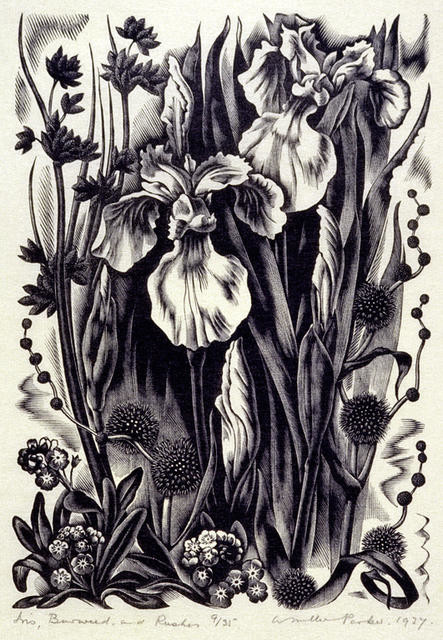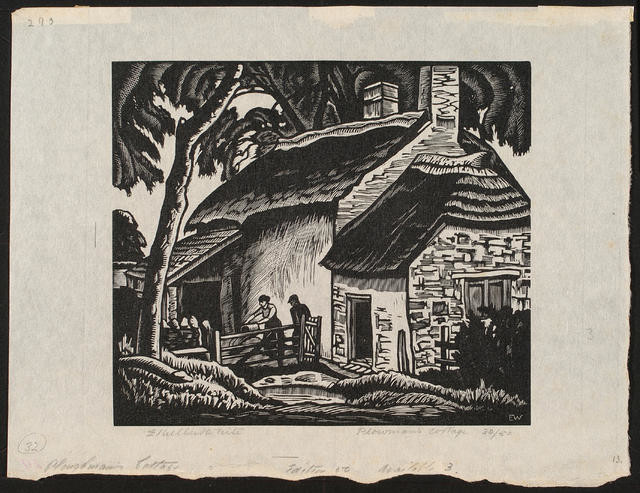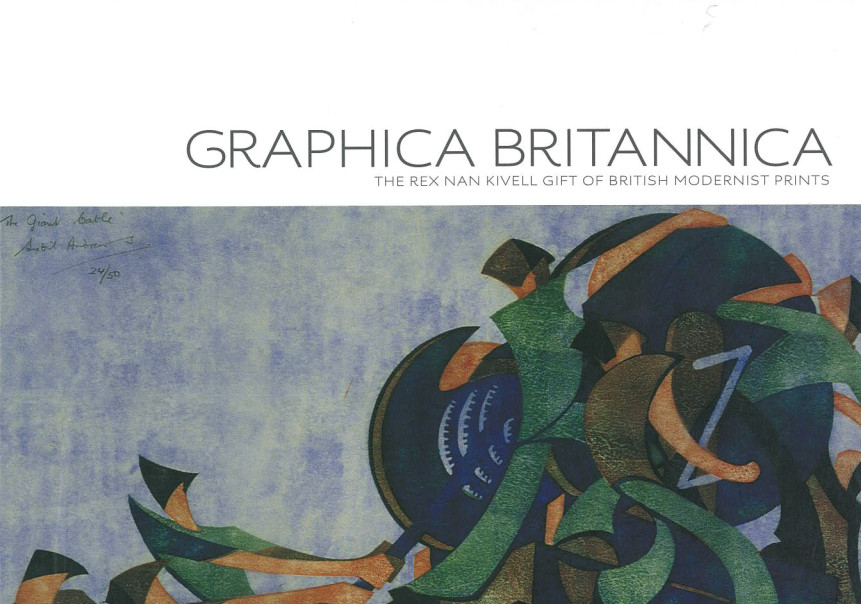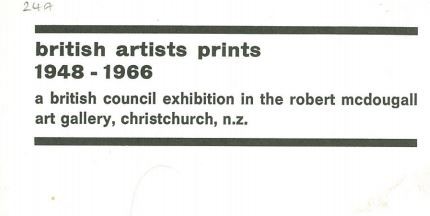B.
This article first appeared as 'Artist captured poetry in wood carving' in The Press on 11 November 2014.
What is going on here? In the bottom half of the picture a scrawny man lies asleep in bed, while several plump mice scurry about. In the top half three cats prowl. A staircase and a shaft of light unite the two halves into a single story.
The creator of this exquisite little scene is British painter, illustrator and designer Eric Ravilious (1903-1942) whose life was cut short when the plane in which he was working as an official War Artist was lost over the North Atlantic.
The clue to today's work is its small size, its very particular shape, and the fact that the cat in the centre has only one eye – the others presumably have two each. Three cats but only five eyes between them. This leads us to the poem 'Five Eyes' by Walter de la Mare (1873-1956) in which 'Jekkel, and Jessup, and one-eyed Jill' chase mice 'while lean old Hans he snores away'. Every line of this short popular poem is captured in this beautiful little composition, as crisp and unsentimental as de la Mare's verse.
De la Mare's poem first appeared in 1913 and was set to music by Armstrong Gibbs (1889-1960) in 1922. It became - indeed it still is - a popular, simple art song for student singers. Gibbs was himself a music examiner and knew exactly how to write a song that would gently challenge, but not confound, young singers. It has been arranged for all manner of voice types and a recording held at Christchurch City Libraries reveals that it was, rather improbably, sung as a massed choir item at the 1979 Christchurch Schools Music Festival.
A popular parlour song needed a piano, a pianist and some printed music. But what if these were not available? Before MIDI files and karaoke backing tracks was of course the reproducing piano or pianola. Punched paper rolls were fed through a mechanism similar to a wind-up music box which caused the piano to play itself, reproducing reasonably faithfully the performance that had created the paper roll in the first place.
Ravilious, very much a professional designer and illustrator who readily turned his hand to printed ephemera, catalogues, tickets, cards, labels and so forth, produced several wood engravings for the Aeolian Piano Roll Company, including the one illustrated above, which was released in 1926. The roll starts with a brass ring to hook it onto the machine, then some advertising matter about other rolls available and some information about the song and its creators. There follow some notes on how best to perform it and the ideal tempo: the speed at which the paper passed through the mechanism could be adjusted. And before the perforations themselves appear, our delightful illustration. It is curious that the boxes in which these piano rolls were packaged were often blank, with just brief title information on the ends. Only when you uncoiled the roll and began to thread it into the pianola was all this extra information revealed.
This item came into the collection as part of Rex Nan Kivell's gift of British prints mentioned previously in this series. Its origin as a piano roll label only became known with the recent publication of Jeremy Greenwood's monumental catalogue raisonné of the wood engravings of Eric Ravilious, published by Wood Lea Press.
Related reading: The Golden Age
Collection
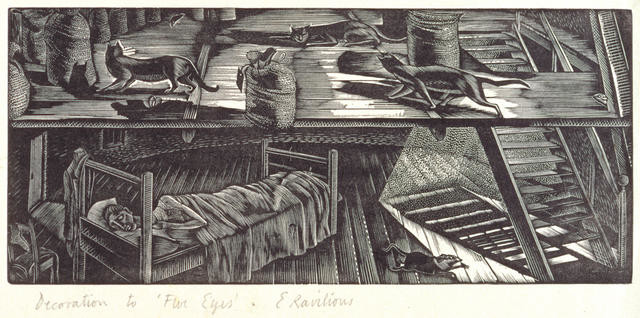
Eric William Ravilious Decoration To ‘Five Eyes’
Eric Ravilious was an extremely talented artist and designer who excelled at numerous artistic mediums, including wood engraving. He was a prolific illustrator for the private press movement, and produced many titles under the much- admired Golden Cockerel Press imprint thanks to his close friendship with Robert Gibbings (who at one point owned the press). Ravilious was no purist, however, shifting with ease between the worlds of high art and commercial design.
Alongside his stunning wood engravings, he was happy to design transfer illustrations for china and even furniture. Decoration to ‘Five Eyes’ was based on the poem ‘Five Eyes’ by Walter de la Mare and was used to illustrate a piano music roll, while Doctor Faustus conjuring Mephistophilis was to be used as an illustration for a Golden Cockerel Press book, Christopher Marlowe’s Dr Faustus, which unfortunately went unpublished.
The Golden Age 18 December 2015 – 1 May 2016
film

Eric Ravilious - Decoration to Five Eyes
The poem 'Five Eyes' by Walter de la Mare was illustrated by Eric Ravilious for a piano roll. The poem is read here by Elric Hooper.
Collection
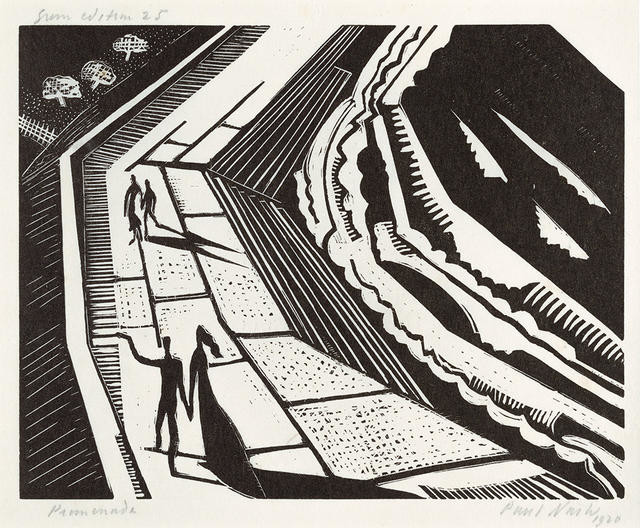
Paul Nash Promenade
Paul Nash was a member of England’s Society of Wood Engravers in the 1920s, and this work, one of his earliest wood engravings, highlights his instinctive approach to the medium. Rather than be tied down by traditional wood-engraving practices of precision and accuracy of line, his mark-making is free and immediate. A jagged, hard-edged perspective intensifies the scene. The waves breaking on the seawall form a series of varied, simplified patterns and shapes. The elongated figures, dwarfed by the wall, intensify the scale of the structure. Nash’s rough and intuitive techniques in cutting the end-grain wood serve to intensify the image and highlight an artist approaching a medium with much tradition under his own terms.
The Golden Age 18 December 2015 – 1 May 2016
Article
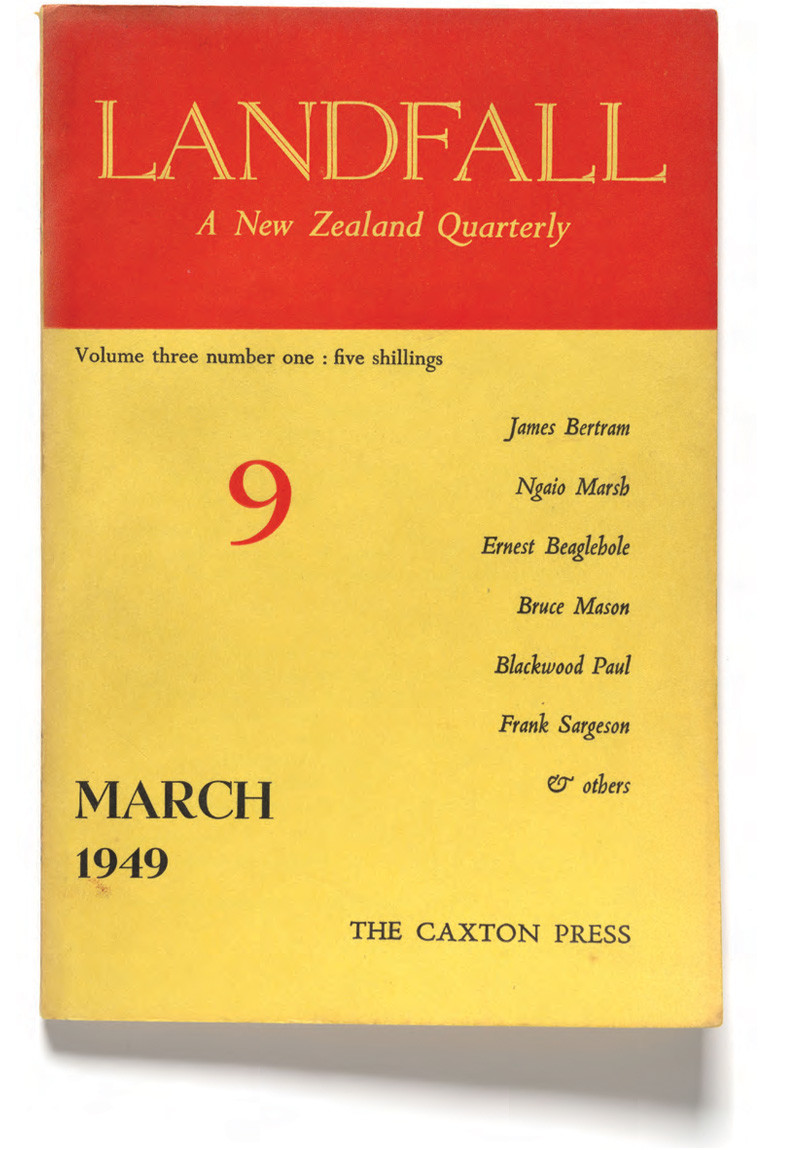
Tomorrow, Book, Caxton Press, Landfall
In the decades before and after the Second World War, Christchurch experienced a remarkable artistic efflorescence that encompassed the visual arts, literature, music, theatre and the publishing of books and journals. And the phenomenon was noticed beyond these islands. For instance, in his 1955 autobiography, English publisher and editor of Penguin New Writing and London Magazine, John Lehmann, wrote (with a measure of exaggeration, perhaps) that of all the world’s cities only Christchurch at that time acted ‘as a focus of creative literature of more than local significance’.
Notes
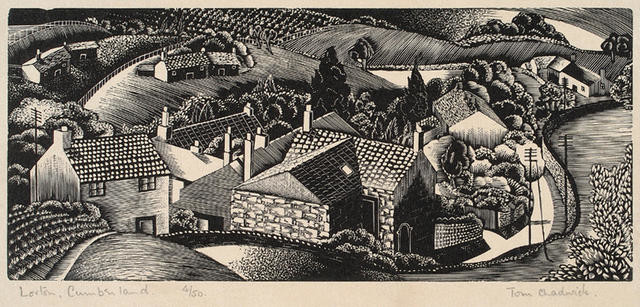
Lorton, Cumberland by Tom Chadwick
This article first appeared as 'Wood engraving artist finally won recognition' in The Press on 27 June 2014.
Notes
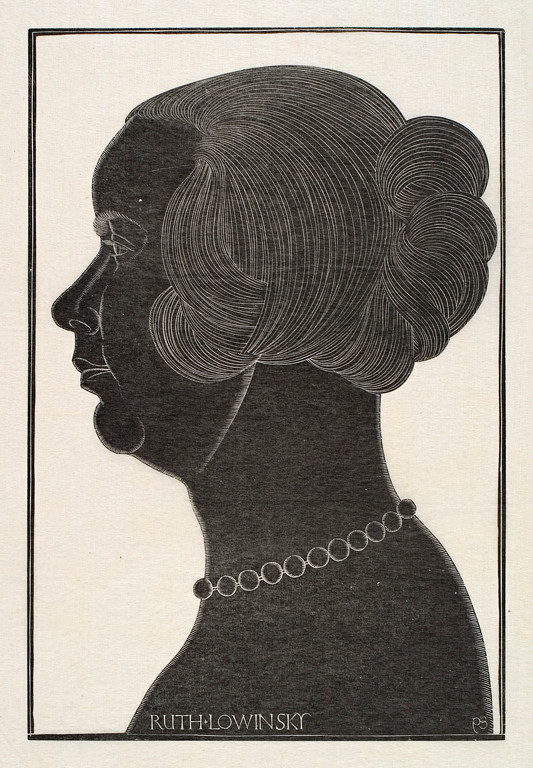
Ruth Lowinsky by Eric Gill
This article first appeared as 'An oblique profile' in The Press on 12 July 2013.
Notes
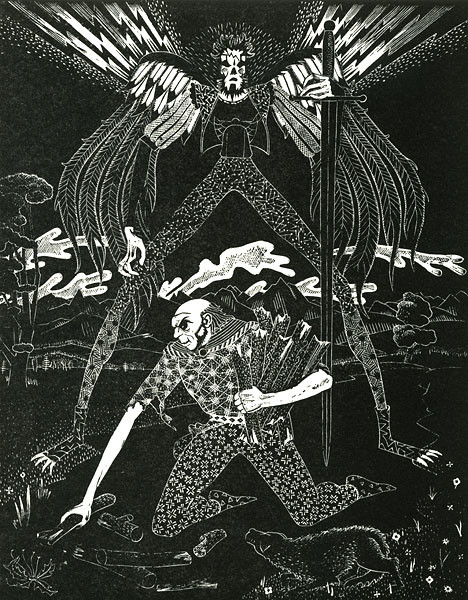
Death and the woodcutter by Leo Bensemann
This article first appeared as 'Death mastered' in The Press on 28 March 2013.
Collection
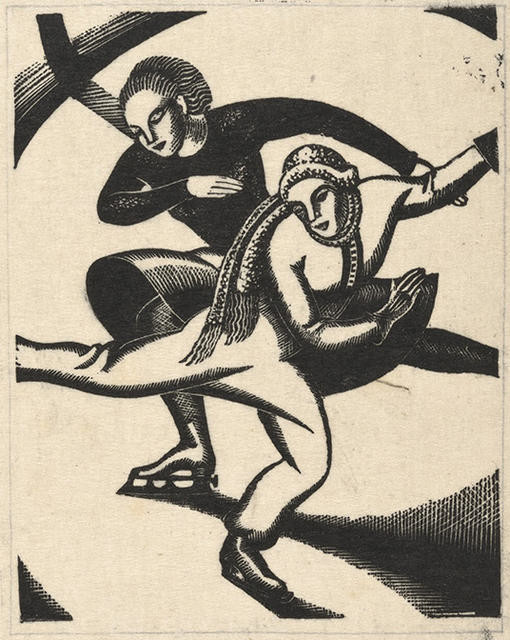
Eileen Mayo Skaters
Two prints from early in Eileen Mayo’s career show the strength of her natural ability. Eileen was nineteen and studying at the Central School of Arts and Crafts, London, when she made the wood engraving Skaters. She made Turkish Bath a few years later in response to an invitation to put work in the Second Exhibition of British Lino-Cuts at the Redfern Gallery, London. Her invitation came from Claude Flight, the linocut’s principal champion, who reportedly instructed her on the technique over the telephone. She had met Flight, a teacher at the Grosvenor School of Art, while working there in 1929 as a life-class model.
(Perilous: Unheard Stories from the Collection, 6 August 2022- )
Collection
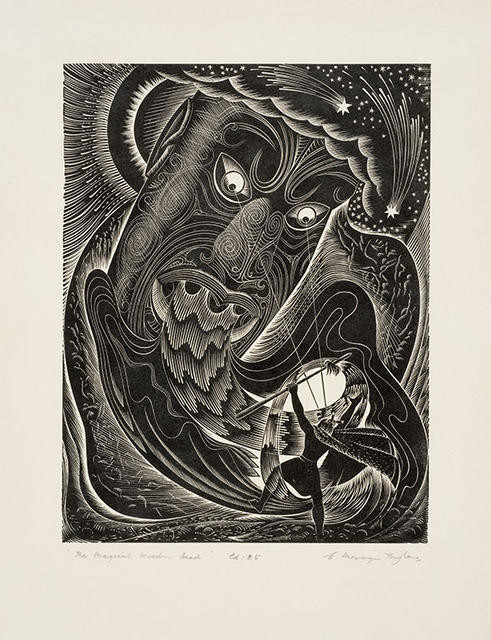
E. Mervyn Taylor The Magical Wooden Head
New Zealand’s most respected wood engraver, E. Mervyn Taylor remains renowned for his delicately engraved and beautifully designed prints. He was drawn to Māori mythology for much of his subject matter, in particular George Grey’s collected legends published as Polynesian Mythology in 1855.
In this work he depicts the myth of the Ma- ori sorcerer Hakawau defeating a carved magical wooden head whose stare will cause death to anyone who looks at it. As with his contemporary British artists, Taylor’s wood engravings were also used for illustrative purposes, and in 1946 he produced a limited edition book of his wood engravings through Christchurch’s Caxton Press – which can be seen elsewhere in the exhibition.
The Golden Age 18 December 2015 – 1 May 2016
'A book of wood engravings' by E Mervyn Taylor is in the Robert and Barbara Stewart Library and Archives and can be viewed by appointment
Collection
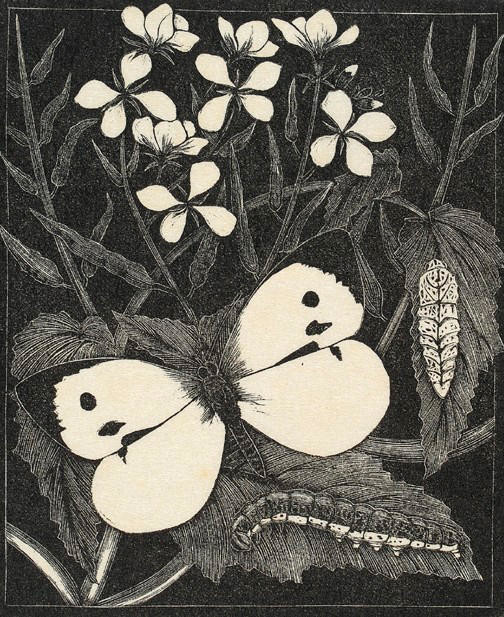
Eric Daglish Cabbage Butterfly
The London-based art critic Malcolm Salaman was very complimentary about Eric Daglish's work, writing in 1927: Mr Eric F. Daglish has a place of his own among our artists on the wood, by reason both of his chosen subject-matter and his decoratively individual manner of treating it. With delicate white lines on black, simply informing or elaborately grouped, and some rhythmic emphasis of white mass, he will depict the bird or quadruped amid its wonted surroundings of vegetable growth, so that these shall conform to a decorative pattern and yet seem to happen naturally. The bird may be on the bough, the frog on the marsh, the rabbit on the edge of the wood, but the artist’s graver will be no less concerned with the branch and its leaves or cones, the reeds and the rushes, the undergrowth, than with the plumage, the skin, the fur. And what a knowledgeable master of varied plumage is Mr Daglish […] But how decoratively alive they are!
The Golden Age 18 December 2015 – 1 May 2016
Collection
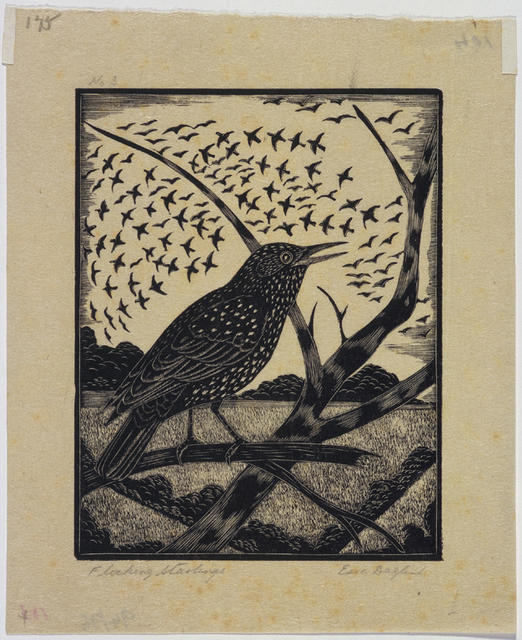
Eric Daglish Flocking Starlings
The London-based art critic Malcolm Salaman was very complimentary about Eric Daglish's work, writing in 1927: Mr Eric F. Daglish has a place of his own among our artists on the wood, by reason both of his chosen subject-matter and his decoratively individual manner of treating it. With delicate white lines on black, simply informing or elaborately grouped, and some rhythmic emphasis of white mass, he will depict the bird or quadruped amid its wonted surroundings of vegetable growth, so that these shall conform to a decorative pattern and yet seem to happen naturally. The bird may be on the bough, the frog on the marsh, the rabbit on the edge of the wood, but the artist’s graver will be no less concerned with the branch and its leaves or cones, the reeds and the rushes, the undergrowth, than with the plumage, the skin, the fur. And what a knowledgeable master of varied plumage is Mr Daglish […] But how decoratively alive they are!
The Golden Age 18 December 2015 – 1 May 2016
Collection

Eric Daglish Hedgehogs
The London-based art critic Malcolm Salaman was very complimentary about Eric Daglish's work, writing in 1927: Mr Eric F. Daglish has a place of his own among our artists on the wood, by reason both of his chosen subject-matter and his decoratively individual manner of treating it. With delicate white lines on black, simply informing or elaborately grouped, and some rhythmic emphasis of white mass, he will depict the bird or quadruped amid its wonted surroundings of vegetable growth, so that these shall conform to a decorative pattern and yet seem to happen naturally. The bird may be on the bough, the frog on the marsh, the rabbit on the edge of the wood, but the artist’s graver will be no less concerned with the branch and its leaves or cones, the reeds and the rushes, the undergrowth, than with the plumage, the skin, the fur. And what a knowledgeable master of varied plumage is Mr Daglish […] But how decoratively alive they are!
The Golden Age 18 December 2015 – 1 May 2016
Collection
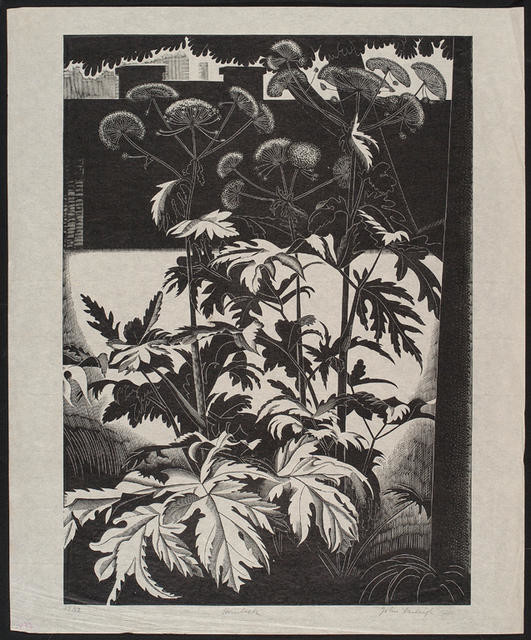
John Farleigh Hemlock
The beautiful forms and shapes of a humble weed are given centre stage in this wood engraving by John Farleigh. He had a natural empathy with the wood engraving medium, as can be seen in this work with its delicate lines and contrasting areas of black and white in the background. In his role as lecturer in the book production department at London’s Central School of Arts and Crafts in the 1920s he encouraged many artists to work with the medium. He illustrated numerous books and produced an important manual on wood engraving for students titled Engraving on Wood (1954).
Describing the process, Farleigh once stated:
The tool has a subtle voice. It will only confide in the understanding craftsman. […] It can become the only living thing about you. All feeling and life; all action and intensity can pass into the tool until the body clouds up and only the point of the tool is in focus. It is then that the tool will talk and all is well.
The Golden Age 18 December 2015 – 1 May 2016
Collection
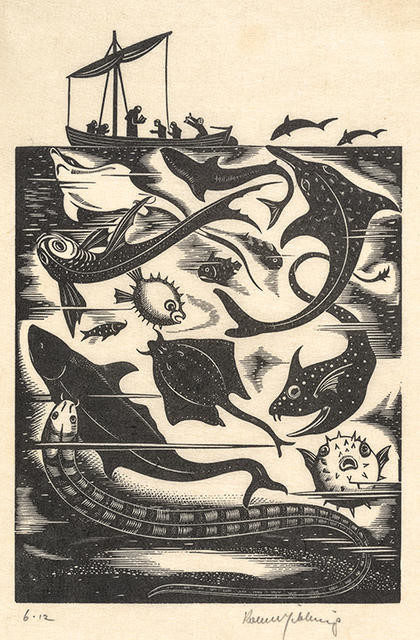
Robert Gibbings St Brendan and the Sea Monsters
Robert Gibbings was an early convert to wood engraving and quickly appreciated its qualities. He once wrote:
Discipline in art: was that what I’d come to London for? Impressionism was what I thought I was after. I couldn’t think what all this hard labour on wood was about. There was no tradition at the time; it seemed a lot of finicky gouging to get a few lines that might have been obtained more easily with a pen or brush. But slowly a love of the wood came upon me. I began to enjoy the crisp purr of the graver as it furrowed the polished surface. I began to appreciate the cleanness of the white line that it incised: even the simplest silhouettes had an austere quality, a dignity, that could not be achieved by other means. Clear, precise statement, that was what it amounted to. Near enough wouldn’t do: it had to be just right.
The Golden Age 18 December 2015 – 1 May 2016
An illustration from 'Beasts and Saints', translated by Helen Waddell, published by Constable, 1949.
Collection

Robert Gibbings Untitled (Kiwi and Worm)
An illustration (page 172) from 'Over the reefs' by Robert Gibbings, published by Dent, 1948.
Collection
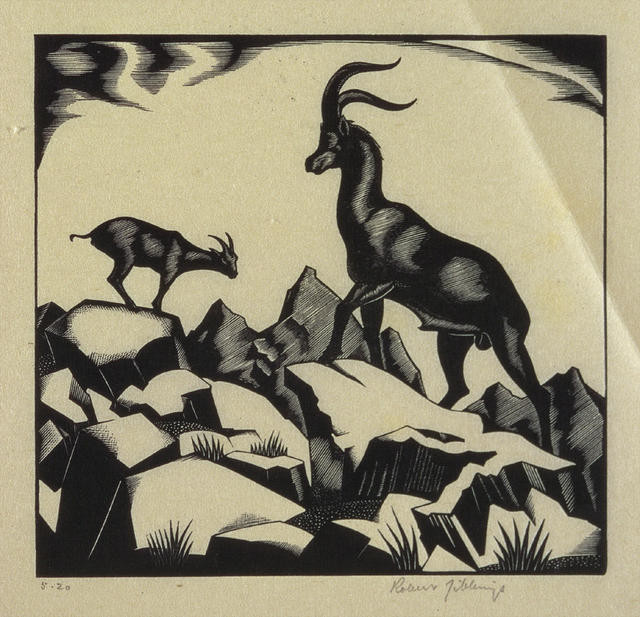
Robert Gibbings Goats on the Mountain
An illustration from 'The Glory of life' by Llewellyn Powys, published by John Lane, 1938
Collection
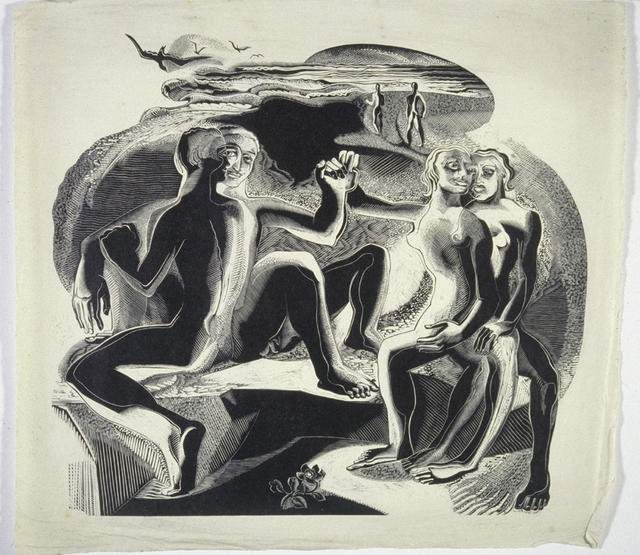
Gertrude Hermes More People
This is the largest wood engraving in the exhibition, and was cut from several blocks glued and clamped to one another. Gertrude Hermes’ interest in the human form was mirrored in her work as a sculptor, and like her contemporary Eric Gill she was able to successfully transition between both mediums. Unlike the hard-edged style of many of Gill’s wood engravings, however, Hermes’ line is sinuous and flowing with various tonal gradations throughout the work. As a sculptor she had a good understanding of human forms, which in More People seem to overlap and merge into one another.
The Golden Age 18 December 2015 – 1 May 2016
Collection
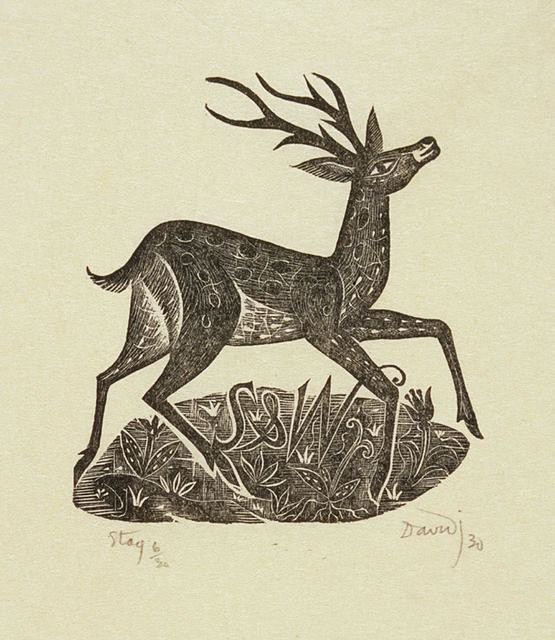
David Michael Jones Stag
One of the striking things about all the artists in The Golden Age is their perfectionism, a necessary quality considering the medium they were working with – engraving the woodblock requires the utmost care and control as a mistake is very difficult to rectify. The quality of printing was also of concern, especially if the artist wasn’t printing the block themselves. The extremely fine detailed lines of the engraved block are notoriously difficult to ink and print: too much ink and the detail is lost, too little and the impression is not crisp enough. David Jones commented:
I think in the case of my work, it is particularly difficult because [the blocks] do depend to some large extent on really ‘sympathetic’ printing, they are very easily killed. I do ‘not’ think this is a virtue in them, far from it, perhaps, but it is a fact. The idea ‘only’ just gets across in any case & mechanical process simply dishes ‘em.
The Golden Age 18 December 2015 – 1 May 2016
Collection
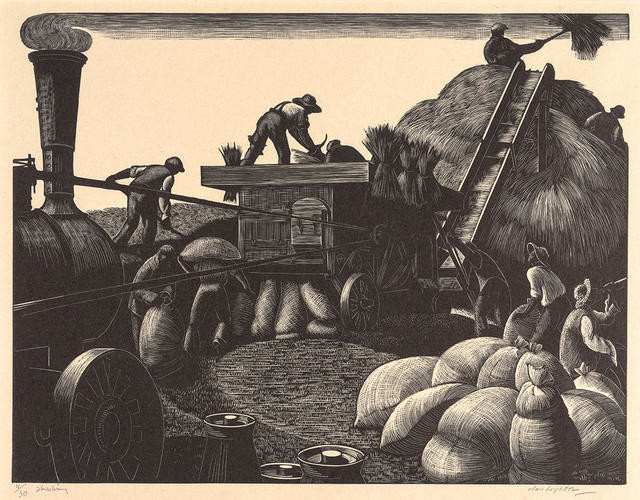
Clare Leighton Threshing
Clare Leighton was a distinguished wood engraver in both England and America. Her parents, the popular fiction writers Marie Connor and Robert Leighton, influenced her to write and illustrate her own books. The two woodblocks shown here appear in her first book, The Farmer’s Year: A Calendar of English Husbandry, published in 1933. The Farmer’s Year illustrates the twelve months of the year on the Buckinghamshire farm where Leighton was living. These wood engravings illustrate threshing in March and apple-picking in September.
Leighton said: “Getting to know the farmers and working with them, I learned the pattern of the year as I shared the shepherds hut at lambing time. I stooked the grain at harvest and climbed ladders to pick apples. I had come home.” Leighton felt a great connection to rural life, finding this a more honest way of living than what workers experienced in the city. This outlook was similar to that of the earlier French realists such as Jean-François Millet, who created celebratory depictions of farm life at a time when many people were leaving the countryside and moving to urban areas.
(Leaving for Work, 2 October 2021 - 1 May 2022)
Collection
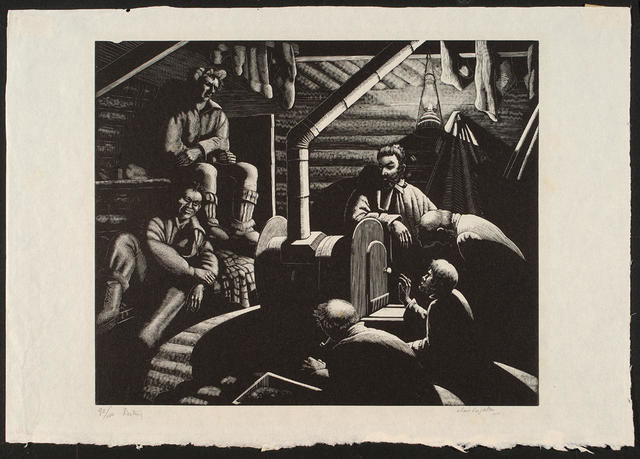
Clare Leighton Resting
Much of Clare Leighton’s work as a wood engraver focused on rural labourers going about their lives in the countryside. These works were used extensively as illustrations in her popular books on country life during the 1930s, including The Farmers Year (1933), Four Hedges: A Gardener’s Chronicle (1935) and Country Matters (1937). The skill of Leighton’s wood engraving is evident in this work, where her exquisite and delicately cut lines create incredibly soft tonal variations. The subject is drawn from her time spent in a lumber camp on Canada’s Quebec-Ontario border. One of the most important manuals on wood engraving remains Leighton’s 'Wood-engraving and Woodcuts' from 1938.
The Golden Age 18 December 2015 – 1 May 2016
Collection
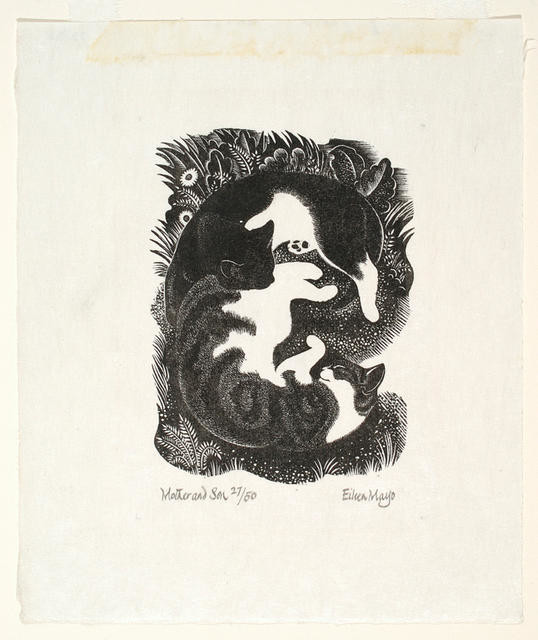
Eileen Mayo Mother and Son
Eileen Mayo has a special place in Christchurch’s art history, not only because of her extraordinary prints and illustrious career but also her tangible connections with this city. Mayo settled here in Christchurch in 1967, having established a career as a printmaker and designer in Britain and Australia. Her British contemporaries included Mabel Annesley and Clare Leighton, both of whom are included in this exhibition, and several works by these artists came into the Gallery's collection as part of a gift of British modernist prints by Redfern Gallery director Rex Nan Kivell.
Mayo adored cats. They were a constant source of companionship throughout her life and were regularly used as subjects in her art.
The Golden Age 18 December 2015 – 1 May 2016
Collection

Eileen Mayo New Year
Nature was the predominant theme in Eileen Mayo’s work throughout her distinguished career as a printmaker, painter and designer. She wrote and illustrated numerous books on subjects as varied as seashells, birdsand cats, including her monumental book The Story of Living Things and Their Evolution (1948). She was fascinated with the variety of forms and shapes of plants, and her subject in this work reflects the year of the seasons, as opposed to the calendar year, that begins with the emergence of spring flowers such as these crocuses.
The Golden Age 18 December 2015 – 1 May 2016
Collection
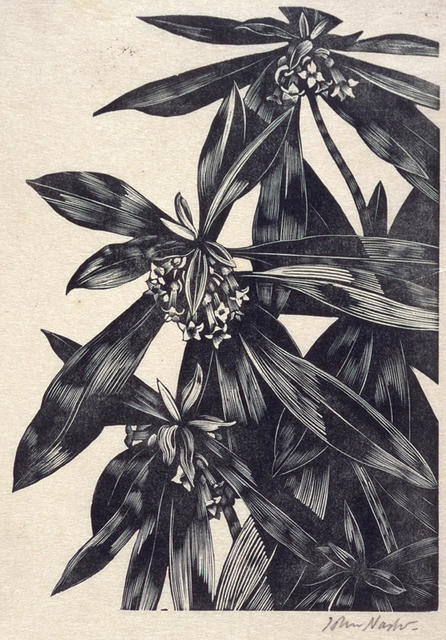
John Nash Spurge Laurel
Illustrated in ‘Poisonous Plants, Deadly, Dangerous and Suspect', The Curwen Press, 1927.
Collection

Leo Bensemann Death and the Woodcutter
Ōtautahi Christchurch printmaker Leo Bensemann excelled at wood-engraving, a medium that allowed him to fully utilise his skill as a draughtsperson and develop his interest in line and pattern. With its range of mark-making and use of patterns, Death and the Woodcutter is a stunning example of Leo’s ability in this most difficult of print mediums. This print also locates a European fable within the New Zealand landscape – the plain, foothills, mountains and nor’west cloud arches bring to mind the Waitaha Canterbury region. Although not a prolific printmaker, likely due to having to balance his work as an artist alongside his day job as a designer, printer and manager at the Caxton Press, Leo’s wood-engravings remain some of the most imaginative and skilled to have been produced in Aotearoa.
Ink on Paper: Aotearoa New Zealand Printmakers of the Modern Era, 11 February – 28 May 2023
Collection

Agnes Miller Parker Fish
Agnes Miller Parker was a prolific wood engraver and illustrated numerous publications throughout her career. She specialised in nature subjects, particularly animals and plants found in Britain. Parker studied at the Glasgow School of Art and was introduced to wood engraving by Gertrude Hermes and Blair Hughes-Stanton. All three artists worked as illustrators for the Gregynog Press in 1930. Parker was a member of the Society of Wood Engravers and the Royal Society of Painter-Etchers and Engravers.
Collection
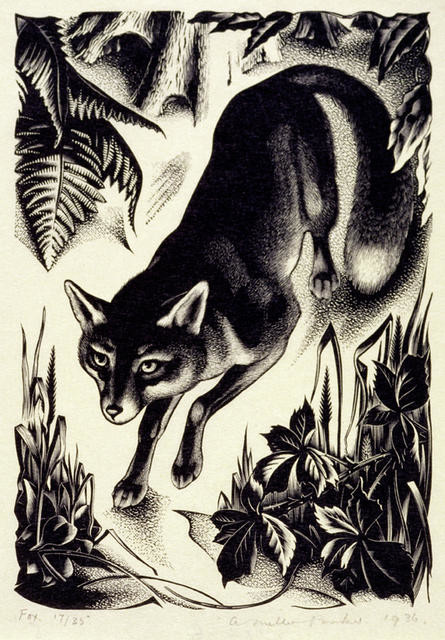
Agnes Miller Parker Fox
Agnes Miller Parker stands out in this exhibition as an artist who had a natural affinity with wood engraving and ranks among the most talented of her generation. Her subjects were often traditional, featuring living creatures, and her working method shows extreme complexity – particularly in her delicate mark-making with the cutting tools known as burins, creating exceptionally subtle tonal contrasts. In this work, the careful cutting of the individual hairs of the fox’s fur creates an impression of softness. Fox was used as an illustration for H. E. Bates’ book Through the Woods (1936), for which Miller Parker created seventy-three wood engravings.
The Golden Age 18 December 2015 – 1 May 2016
Collection
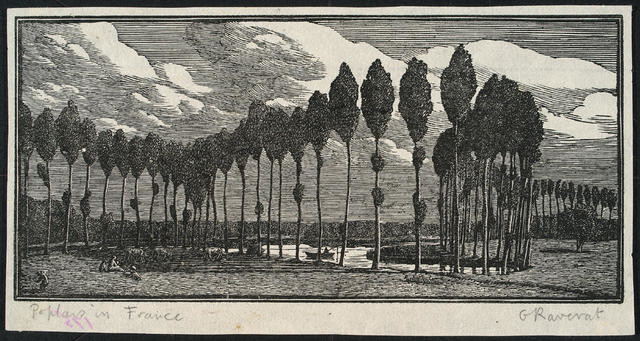
Gwen Raverat Poplars in France
A major figure in the British wood engraving movement of the 20th century, Gwendolen Raverat took an impressionistic approach to the medium. Rather than in the studio, she worked on many of her subjects, such as Poplars in France, out of doors. Raverat’s first wood engravings date from 1905 and, although she received little formal training, she excelled with the medium. She studied at the Slade School in 1908, and in 1915 settled in France with her husband and two daughters. Raverat was a founding member of the Society of Wood Engravers in 1920. She returned to England in 1925 and continued to illustrate books.
Collection

Gwen Raverat Threshing
Gwen Raverat was a celebrated author and book illustrator, and a major figure in the British wood engraving movement of the twentieth century. The granddaughter of Charles Darwin, she trained at the Slade School of Art (1908-11) and after she married the French painter Jacques Raverat in 1911 they both joined the Bloomsbury Group and Rupert Brooke’s Neo-Pagans. The family later settled in France, but after the death of Jacques in 1925 Gwen returned to Cambridge, where she had spent her childhood. Raverat often worked outdoors and took an impressionistic approach to the wood engraving medium, creating works full of varied textures. Many of her works depicted agricultural scenes, such as this impressive view of hay being stacked using a traction elevator. The fine leaves of the surrounding trees and the soft piles of hay are contrasted with the strong lines of the machinery.
(Turn, Turn, Turn: A Year in Art, 27 July 2019 – 8 March 2020)
Collection
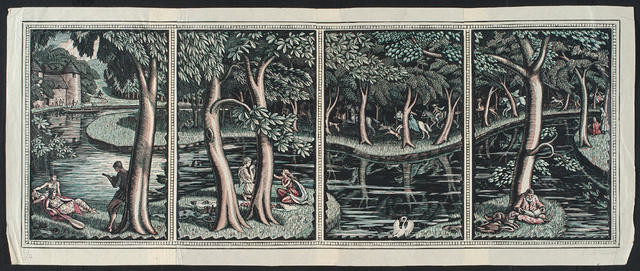
Gwen Raverat The Golden Age
One of Britain’s most celebrated printmakers, Gwen Raverat was a formative figure in the wood-engraving revival in Britain during the first half of the twentieth century. In Raverat’s arcadian vision of a golden age, figures exist in harmony with nature and each other. With its rich hand-colouring Raverat’s large wood-engraving draws parallels with medieval tapestries, detailing a country life in which the trials and tribulations of living in a town are left behind.
Collection
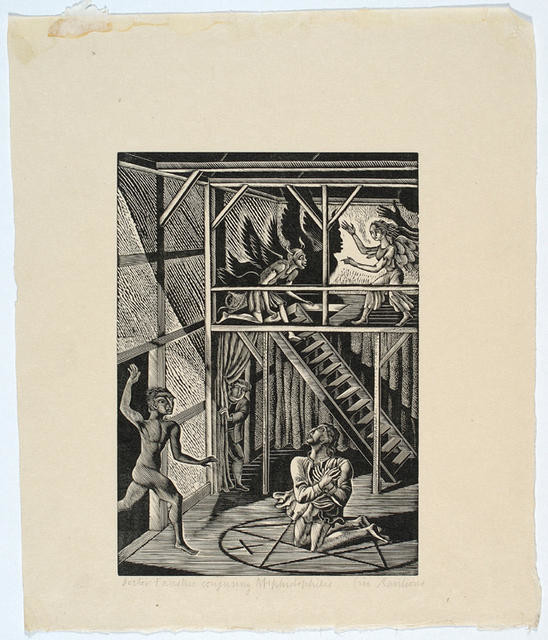
Eric William Ravilious Doctor Faustus Conjuring Mephistophilis
Eric Ravilious was an extremely talented artist and designer who excelled at numerous artistic mediums, including wood engraving. He was a prolific illustrator for the private press movement, and produced many titles under the much- admired Golden Cockerel Press imprint thanks to his close friendship with Robert Gibbings (who at one point owned the press). Ravilious was no purist, however, shifting with ease between the worlds of high art and commercial design.
Alongside his stunning wood engravings, he was happy to design transfer illustrations for china and even furniture. Decoration to ‘Five Eyes’ was based on the poem ‘Five Eyes’ by Walter de la Mare and was used to illustrate a piano music roll, while Doctor Faustus conjuring Mephistophilis was to be used as an illustration for a Golden Cockerel Press book, Christopher Marlowe’s Dr Faustus, which unfortunately went unpublished.
The Golden Age 18 December 2015 – 1 May 2016
Collection

Francis A. Shurrock Be still Earth, be silent, be still and be silent
Like Roland Hipkins, Robert Field and William Allen, the sculptor Francis Shurrock studied at the Royal College of Art in London and immigrated to Aotearoa under the La Trobe scheme to take up a teaching position at one of the country’s art schools. Francis, or Shurrie as his students fondly called him, taught at the Canterbury College School of Art in Ōtautahi Christchurch, where he offered a contemporary, modern outlook on art that was in contrast to the conservative atmosphere of the school at that time. Francis owned a large collection of ukiyo-e Japanese woodblock prints, which he made freely available to his students and friends. He began making linocuts in the late 1920s and wood-engravings in the early 1930s, encouraging many of his students to use these mediums in their practice.
Ink on Paper: Aotearoa New Zealand Printmakers of the Modern Era, 11 February – 28 May 2023
Collection
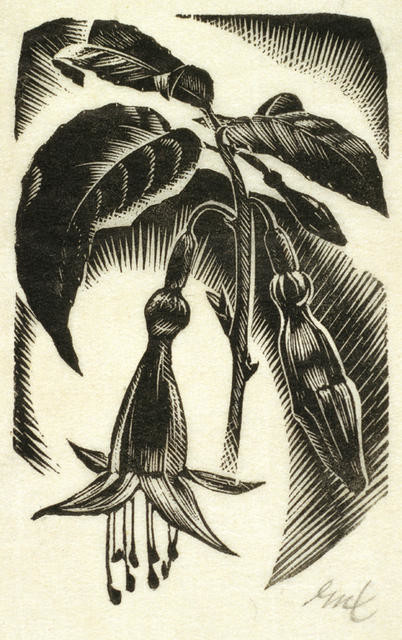
E. Mervyn Taylor Native Fuchsia
Mervyn Taylor was one of the few New Zealand artists to successfully work with the wood engraving medium during the 20th century, reflecting the medium’s revival in England at the time. Initially trained as a jeweller’s engraver, he made a successful transition to wood engraving, one of the most difficult print mediums to master, and produced work that focused on Māori and New Zealand subject matter. Taylor was born in Auckland. In 1952 he was awarded the Association of New Zealand Art Societies Scholarship, which allowed him to study Māori life and culture in Te Kaha in the eastern Bay of Plenty. He was elected a member of the Society of Illustrators, New York, in 1950 and a fellow of the Institute of Arts and Letters, Linau, in 1953. Taylor held a solo exhibition at the Museum of Natural History in New York in 1954, and his work was included in the First International Biennale of Prints in Tokyo in 1957.
The Golden Age 18 December 2015 – 1 May 2016
Collection

E. Mervyn Taylor Tauhou Feeding Chick
Aotearoa’s best-known and respected printmaker working during the twentieth century, Mervyn Taylor produced at least 239 wood-engravings over the course of his career, and many more linocuts as well. He initially worked as a jeweller, for which his training included engraving. Unlike his contemporaries who trained at art schools throughout the country and abroad, Mervyn was self-taught. His prints focused on subjects that were unique to Aotearoa at a time when a national identity was at the forefront of Pākehā art, including elements from Māori culture as well as landscapes and native flora and fauna. His wood-engravings remain popular and are highly sought after.
Ink on Paper: Aotearoa New Zealand Printmakers of the Modern Era, 11 February – 28 May 2023
Collection
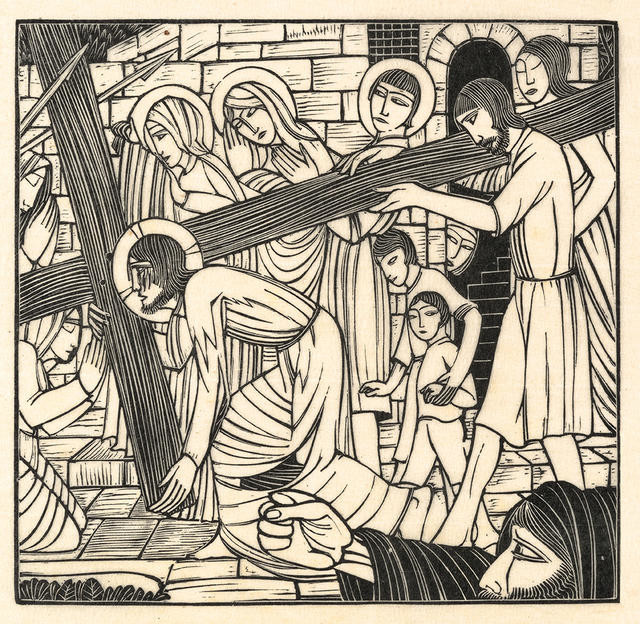
Eric Gill Carrying of the Cross
Eric Gill was one of the most prominent and energetic proponents of wood engraving during its revival in England during the 1920s. His training as a sculptor put him in good stead for the medium: scale aside, carving an uncut piece of stone is not dissimilar to carving the surface of a wood engraving block. Gill excelled as a wood engraver. He was one of the most prolific of his generation, and his work illustrated many private press publications. In this work, Gill's strong, hard-edged lines cut directly from the wood engraving block, reflect his training as a sulptuor and highlights his unique style. It was included as an illustration in Passio Domini Nostri Jesu Christi, published by the Golden Cockerel Press in 1926.
The Golden Age 18 December 2015 – 1 May 2016
Collection
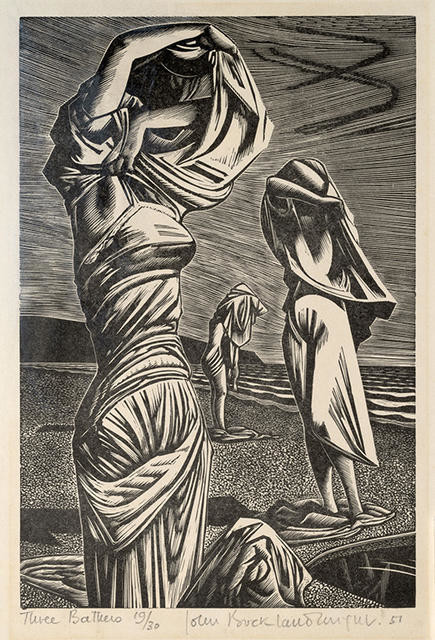
John Buckland Wright Three Bathers
Recognised internationally for his wood-engravings, John Buckland Wright originally came from Ōtepoti Dunedin and moved to England at a young age. He became interested in wood-engraving in the mid-1920s and taught himself the medium. Living in Brussels at this time, he joined De Vijf, a group of contemporary Belgian woodblock printers. He gained a reputation for book illustration and was commissioned to cut wood-engravings by some of the most celebrated private presses, including The Golden Cockerel Press.
Ink on Paper: Aotearoa New Zealand Printmakers of the Modern Era, 11 February – 28 May 2023
Collection
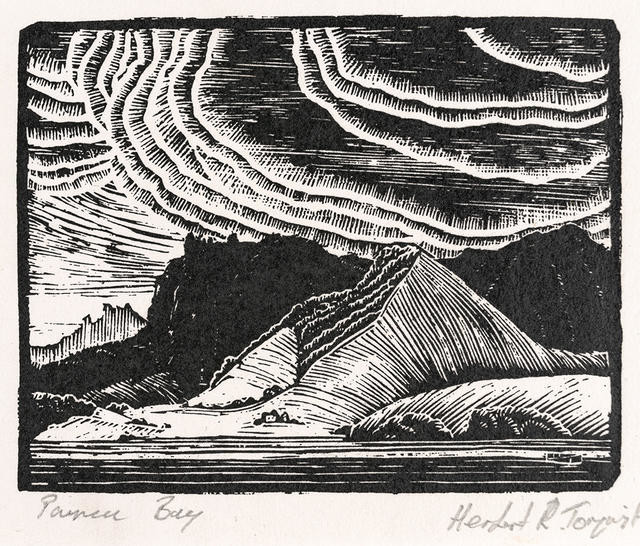
Bert Tornquist Parua Bay
Herbert Tornquist studied under Edward Friström at the Elam School of Art between 1910 and 1915 and, after time spent in Canada, England and the United States, settled back in Tāmaki Makaurau Auckland where he eventually established a photography studio in 1925. Bert became one of the country’s most successful portrait photographers at the time, and was also committed to his printmaking practice. He was an active member of the Quoin Club, and his views of the landscapes around Auckland, Te Tai Tokerau Northland and Te Tara-o-te-Ika a Māui Coromandel from this time are refreshingly energised, using simple yet striking contrasts of black and white tones.
Ink on Paper: Aotearoa New Zealand Printmakers of the Modern Era, 11 February – 28 May 2023
Notes
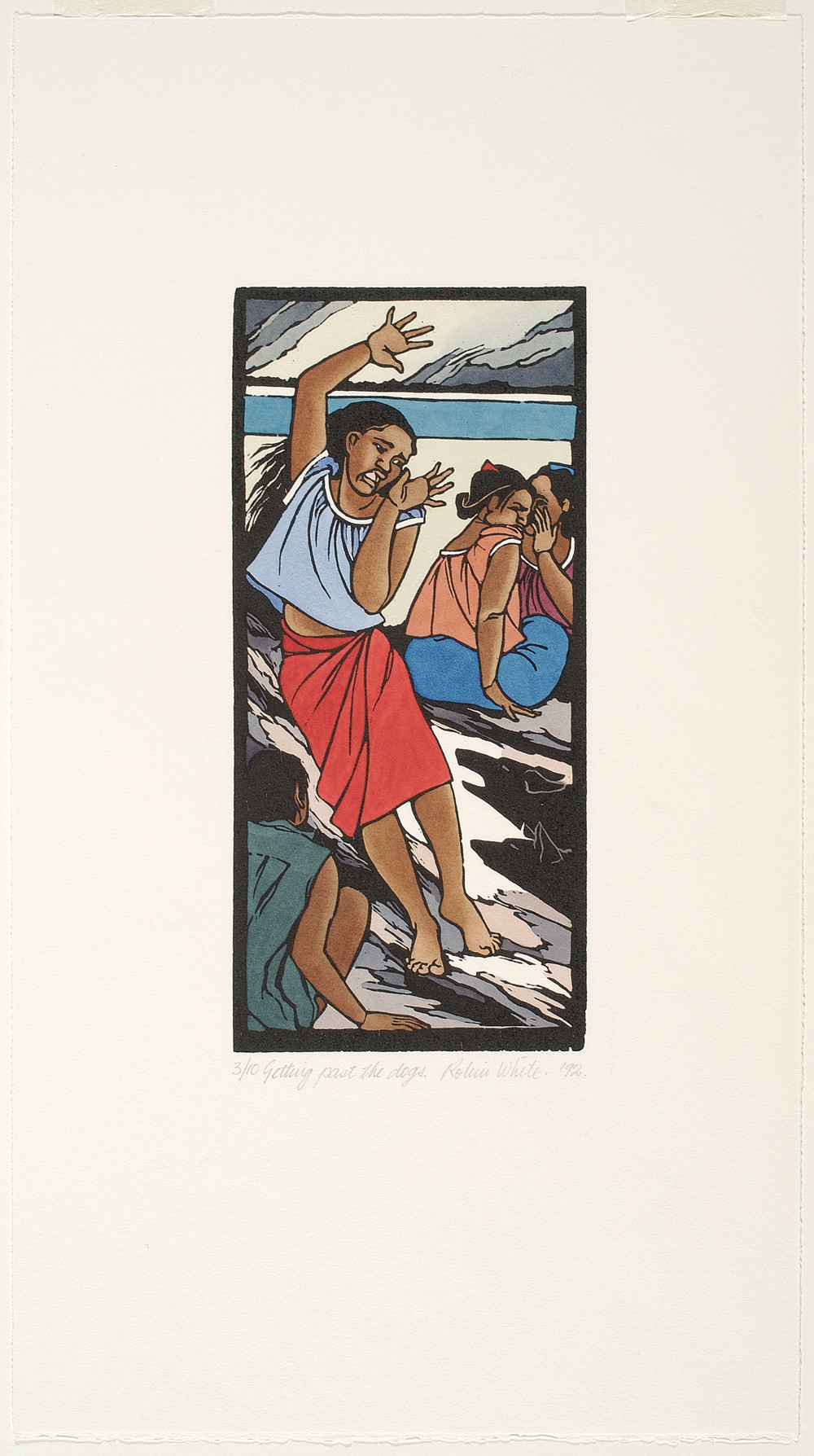
The Print Collection
If the question "what is the largest individual collection area numerically held by the Gallery?" was to be asked, the answer would have to be the Works on Paper collection, within which are 2145 original contemporary and historical prints, the earliest dating from the second half of the fifteenth century.
Notes
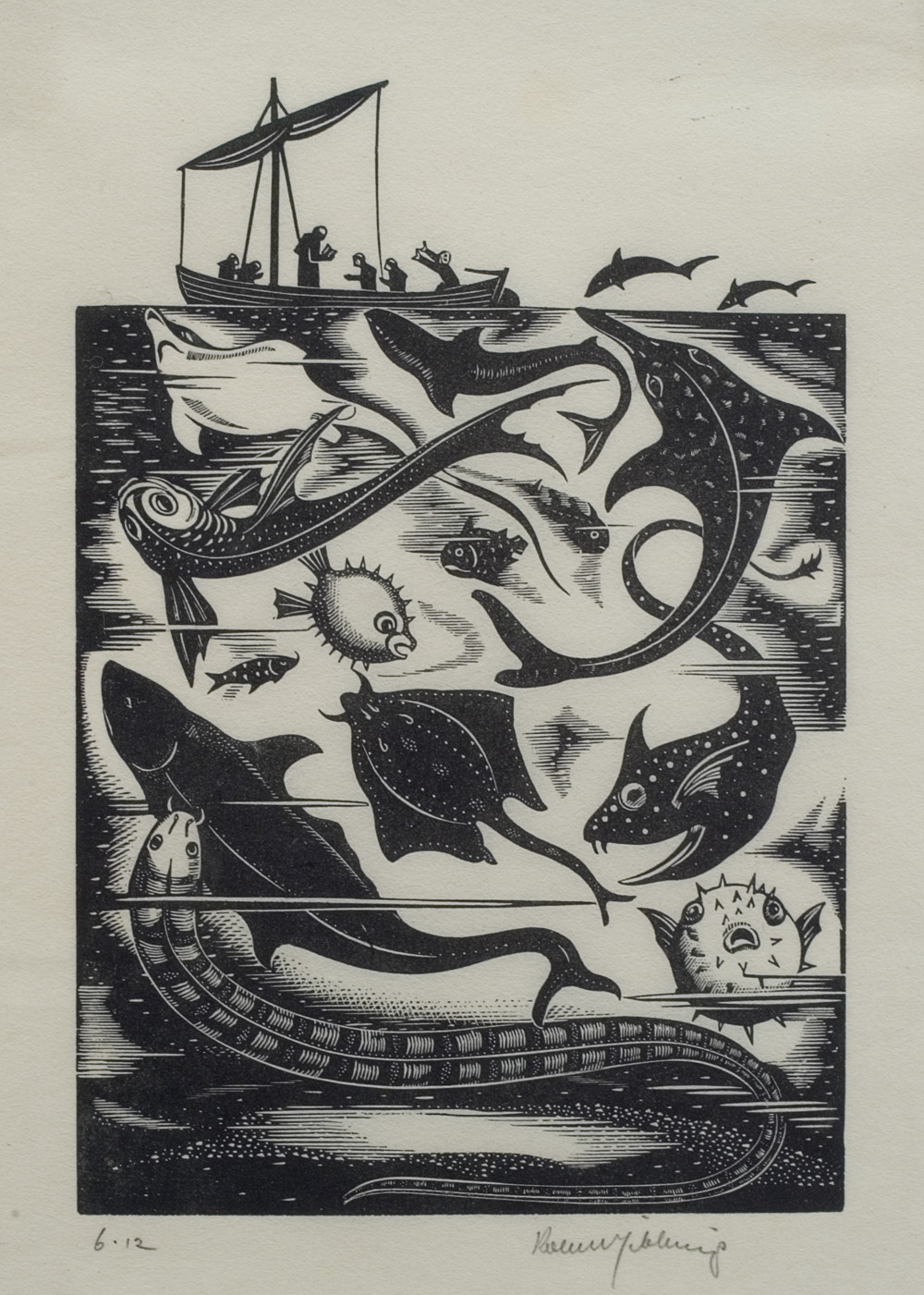
St Brendan and the Sea Monsters by Robert Gibbings
This article first appeared in The Press on 14 December 2005
At just 14 cm tall, the exquisite St Brendan and the Sea Monsters by Irish-born Robert Gibbings (1889-1958) is one of the smallest works in Christchurch Art Gallery's collection, but carries with it some of the largest tales. A rhythmic composition of swirling sea serpents, stingrays and sharks, this finely-crafted woodcut print tells the story of 6th century Irish explorer-monk St. Brendan, or Brendan the Navigator, whose recorded travels were an important part of medieval European folklore, and which continue to fascinate.

